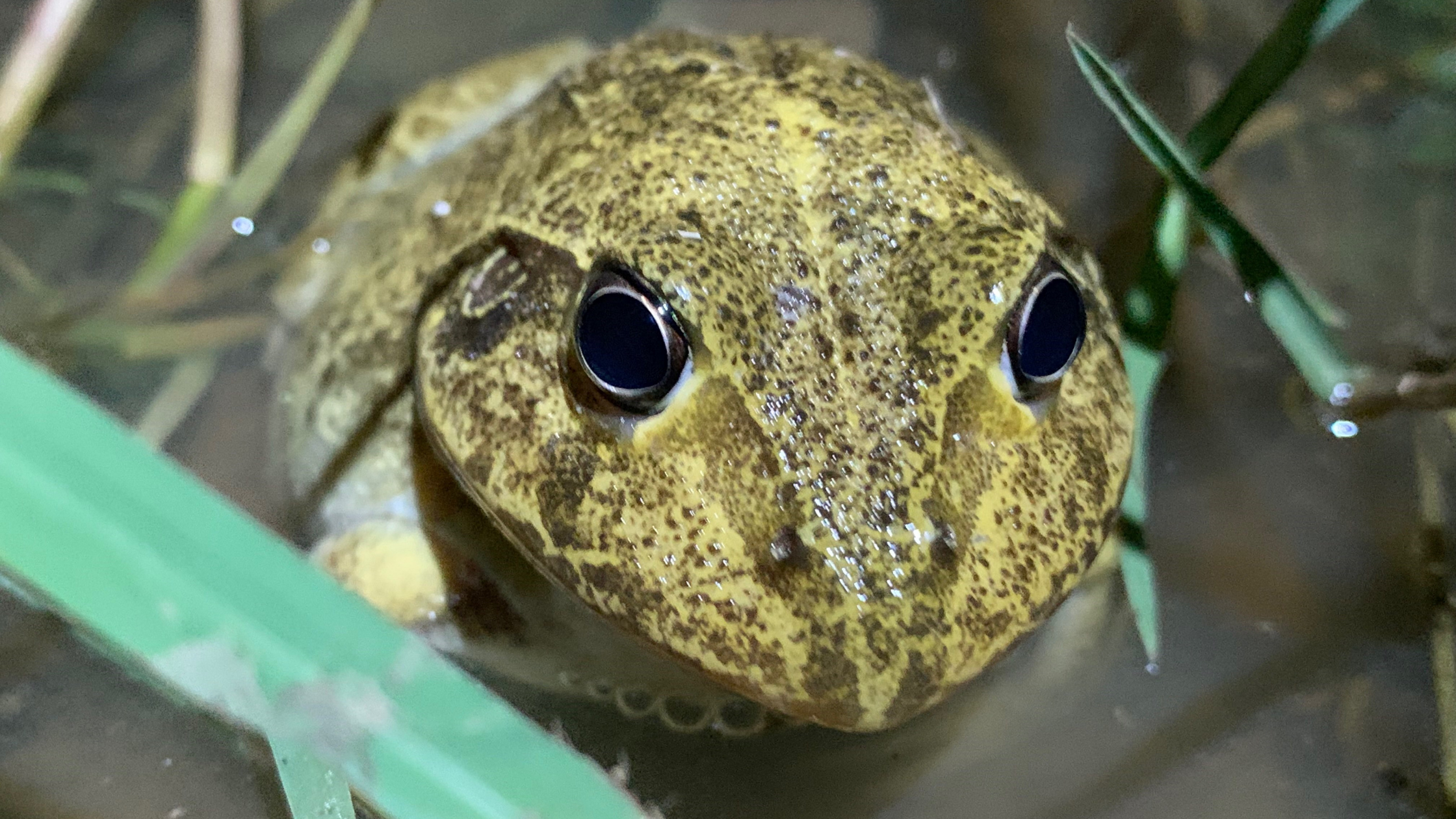
While we acknowledge that there are still some parts of western Queensland that have received little or no recent rain, the downpours in areas such as Roma have stimulated frog activity that I haven’t seen since the last big wet years between 2010 and 2012. Standing on our home deck last night I could hear a cacophony of frog calls made by over 10 species. By carefully tuning in, one can identify individual voices amongst the crowd. One of the loudest calls came from the largest frog in Outback Queensland this being the Eastern Snapping Frog (Cyclorana novaehollandiae). It has a booming “whaa… whaa…” call which can be heard from several hundred metres away on a still night.
This frog is known by a number of other common names such as Eastern Snapping Frog, New Holland Frog and Wide-mouthed Frog. The “snapping frog” name comes from its voraciousness as a predator – basically this frog will eat anything that walks, crawls or otherwise moves past its wide mouth. Its prey includes other frogs, snakes, lizards, small mammals, centipedes, spiders and large insects.
While these frogs make a noisy appearance after rain, they actually spend most of their life underground. After rain they bury into the soil and enclose their body in a self-made cocoon. This helps conserve moisture as they may have to last many months between drinks! It’s like being wrapped up in glad wrap.
These frogs only breed after heavy rain in the warmer months and females may lay up to 5000 eggs. Given the large size of the adults (up to 10 cm long), the tadpoles can be quite large compared to other western frogs.
The colours of the Eastern Snapping Frog are highly variable but most commonly as adults they are various shades of brown. Juveniles may be brown or have patches of green. Unfortunately, their colour and large size often leads to confusion with the introduced Cane Toad. This results in a lot of these frogs being killed by humans due to mistaken identity. You can pick this waterholding frog from a cane toad by its smooth skin with several long, narrow skin folds vs warty and two large poison glands behind the head in toads.
If you’d like to know more about waterholding frogs here are some great online web sites:

